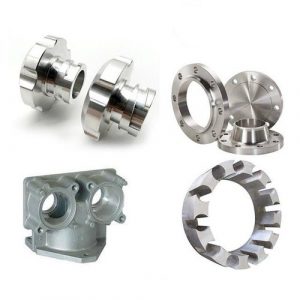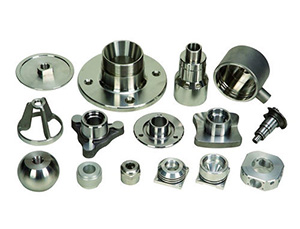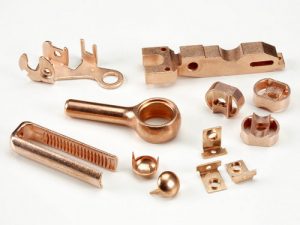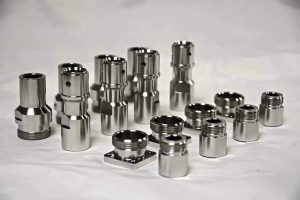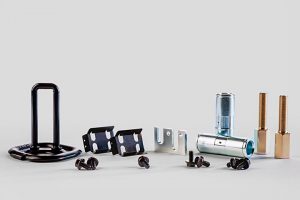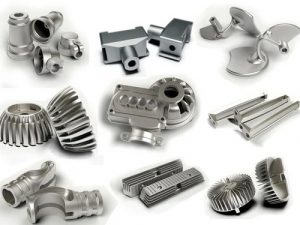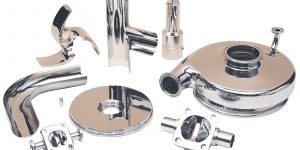What is electroplating?
Electroplating is a process that involves depositing a thin layer of metal on the surface of another material by using an electric current. In electroplating, the material to be plated is immersed in a solution that contains ions of the metal that is to be deposited. An electric current is then passed through the solution, causing the metal ions to be reduced and deposited onto the surface of the material. The resulting metal layer is uniform and has a high degree of adhesion, making it useful for a variety of applications such as improving corrosion resistance, enhancing conductivity, improving wear resistance, and adding a decorative layer. Electroplating is used in a range of industries, including electronics, automotive, and jewelry making, among others.
What are types of electroplating?
There are several different types of electroplating, each with its own unique set of characteristics and applications. Some of the most common types of electroplating include:
Nickel plating: Nickel plating is used to provide a hard, durable, and corrosion-resistant surface on a variety of materials, including steel and other metals.
Chrome plating: Chrome plating is used to provide a highly reflective and corrosion-resistant surface on a variety of materials. It is commonly used in the automotive and aerospace industries.
Gold plating: Gold plating is used to provide a decorative and corrosion-resistant surface on a variety of materials, including electronics and jewelry.
Copper plating: Copper plating is used to provide a conductive surface on a variety of materials, including printed circuit boards.
Tin plating: Tin plating is used to provide a corrosion-resistant surface on a variety of materials, including steel and other metals.
Zinc plating: Zinc plating is used to provide a corrosion-resistant surface on a variety of materials, including steel and other metals.
Silver plating: Silver plating is used to provide a highly conductive and corrosion-resistant surface on a variety of materials, including electronics and jewelry.
Each type of electroplating has its own unique set of advantages and disadvantages, and the choice of electroplating process will depend on the specific requirements of the application.
Nickel Plating:-
Nickel plating is a process in which a thin layer of nickel is deposited onto the surface of a substrate material, such as steel, aluminum, or plastic.
Nickel plating is accomplished through a process called electroplating, in which the substrate material is immersed in a bath of nickel ions. An electric current is then passed through the bath, causing the nickel ions to be reduced and deposited onto the surface of the substrate. The thickness and quality of the nickel layer can be controlled by adjusting the parameters of the plating process, such as the current density, the temperature of the bath, and the composition of the bath.
Nickel plating is widely used in a variety of industries, including aerospace, automotive, electronics, and consumer goods.
Chrome Plating:-
Chrome Plating (less commonly chromium plating) is a technique of electroplating a thin layer of chromium onto a metal object. A chrome-plated item is called chrome. The chromed layer can be decorative, provide corrosion resistance, ease of cleaning, or increase surface hardness. Sometimes, a less expensive imitator of chrome may be used for aesthetic purposes.
Gold Plating:-
Gold plating is a process of depositing a thin layer of gold onto the surface of another metal. This is typically done for decorative purposes, to enhance the appearance and to improve the resistance of the surface to corrosion, tarnish, and wear. The gold layer is usually only a few millionths of an inch thick, and it is applied through a process called electroplating, in which an electric current is used to dissolve gold ions from a solution and deposit them onto the surface of the metal. The metal underneath the gold layer is usually made of a cheaper, more abundant metal, such as copper or nickel, and serves as a substrate to support the gold layer.
Copper Plating:-
Copper plating is a process of depositing a thin layer of copper onto the surface of another metal. This is done for a variety of reasons, including improving the conductivity of the metal, enhancing its appearance, and protecting it from corrosion. Copper plating is often used in electronic components, such as connectors and circuit boards, where conductivity is important. In these applications, a layer of copper is deposited onto a metal surface, such as aluminum or stainless steel, to improve its electrical conductivity. Copper plating can also be used for decorative purposes, for example to enhance the appearance of jewelry or to give a metal object an antique or rustic look. The process of copper plating involves electroplating, in which a metal object is submerged in a solution containing copper ions, and an electric current is used to transfer the ions from the solution onto the surface of the metal object.
Tin Plating:-
Tin plating is a process of depositing a thin layer of tin onto the surface of another metal. Tin is a soft, silvery-white metal that is known for its low melting point, good ductility, and excellent corrosion resistance. Tin plating is often used in the electronics industry to coat the surface of electrical components, such as circuit boards and connectors, to protect them from corrosion and improve their electrical conductivity.
The process of tin plating involves electroplating, in which a metal object is submerged in a solution containing tin ions, and an electric current is used to transfer the ions from the solution onto the surface of the metal object. The tin layer deposited on the surface is usually only a few millionths of an inch thick, and it forms a protective barrier that helps to prevent corrosion and oxidation of the metal underneath. Tin plating is also used in the food and beverage industry, where tin-plated steel is used to make cans for food and drinks, due to its non-toxicity and ability to prevent corrosion.
Zinc Plating:-
Zinc plating is a process of depositing a thin layer of zinc onto the surface of another metal. Zinc is a metal that is abundant, low in cost, and has good corrosion resistance properties. Zinc plating is often used as a protective coating for other metals, such as steel, to prevent corrosion and increase the lifespan of the metal component.
The process of zinc plating involves electroplating, in which a metal object is submerged in a solution containing zinc ions, and an electric current is used to transfer the ions from the solution onto the surface of the metal object. The zinc layer deposited on the surface is usually only a few millionths of an inch thick, and it forms a protective barrier that helps to prevent corrosion of the metal underneath. Zinc plating is often used in automotive and other industrial applications, where the metal components are exposed to harsh environments and need to be protected from corrosion. Zinc plating is also used in the galvanization of iron and steel products, such as fence posts and metal structures, to improve their resistance to corrosion.
Silver Plating:-
Silver plating is a process of depositing a thin layer of silver onto the surface of another metal. Silver is a metal that is prized for its beauty, durability, and excellent electrical and thermal conductivity. Silver plating is often used for decorative purposes, to enhance the appearance of a metal object and make it look more luxurious and refined.
The process of silver plating involves electroplating, in which a metal object is submerged in a solution containing silver ions, and an electric current is used to transfer the ions from the solution onto the surface of the metal object. The silver layer deposited on the surface is usually only a few millionths of an inch thick, and it forms a bright, reflective surface that is resistant to tarnishing and corrosion. Silver plating is often used in the production of jewelry, silverware, and other decorative objects, as well as in electronic components, where its excellent conductivity is important. Silver plating is also used in some dental and medical applications, where it is used to coat prosthetics and implants to reduce infections and improve biocompatibility.
What is Electropolishing?
Electropolishing is a metal finishing process that involves using an electrical current to smooth and passivate the surface of a metal. It is similar to electroplating, but instead of depositing a metal onto the surface, the process removes small amounts of metal from the surface to create a smooth, polished, and passive (non-reactive) surface. The process works by dissolving the metal surface in an electrically charged solution and using an electric current to control the rate of dissolution.
Electropolishing is commonly used for stainless steel, aluminum, and other metals that are difficult to polish using mechanical methods. The process can improve the surface finish and remove small surface imperfections, such as pits, scratches, and burrs, to create a smooth, even surface. Electropolishing also removes contaminants from the surface of the metal and creates a passive surface layer that helps to prevent corrosion.
In addition to improving the appearance and corrosion resistance of metal surfaces, electropolishing can also improve the performance of metal parts in certain applications. For example, in the aerospace and medical industries, electropolished metal parts are often used to reduce friction, improve cleanliness, and increase the strength and durability of the components.
What are methods of electroplating?
Brush electroplating: In this method, a brush is used to apply a solution containing metal ions to the surface of the object to be plated. An electric current is then applied to the brush, causing the metal ions to deposit onto the surface of the object.
Barrel electroplating: This method is used for electroplating large objects or multiple smaller objects at once. The objects to be plated are placed inside a rotating barrel along with a solution containing metal ions. An electric current is then applied, causing the metal ions to deposit onto the objects.
Rack electroplating: In this method, the object to be plated is suspended in a solution containing metal ions, and an electric current is applied between the object and a piece of metal used as the anode. The metal ions in the solution deposit onto the surface of the object, forming a thin and even layer.
Electroless plating: This method does not require an electric current to be applied. Instead, a chemical reaction takes place between the surface of the object to be plated and the metal ions in the solution, causing the metal ions to deposit onto the surface.
Vapor deposition: In this method, a metal is heated until it vaporizes, and then the vapor is deposited onto the surface of the object to be plated. This method can produce very thin and uniform metal layers, and it is commonly used for semiconductor and electronic applications.

